a
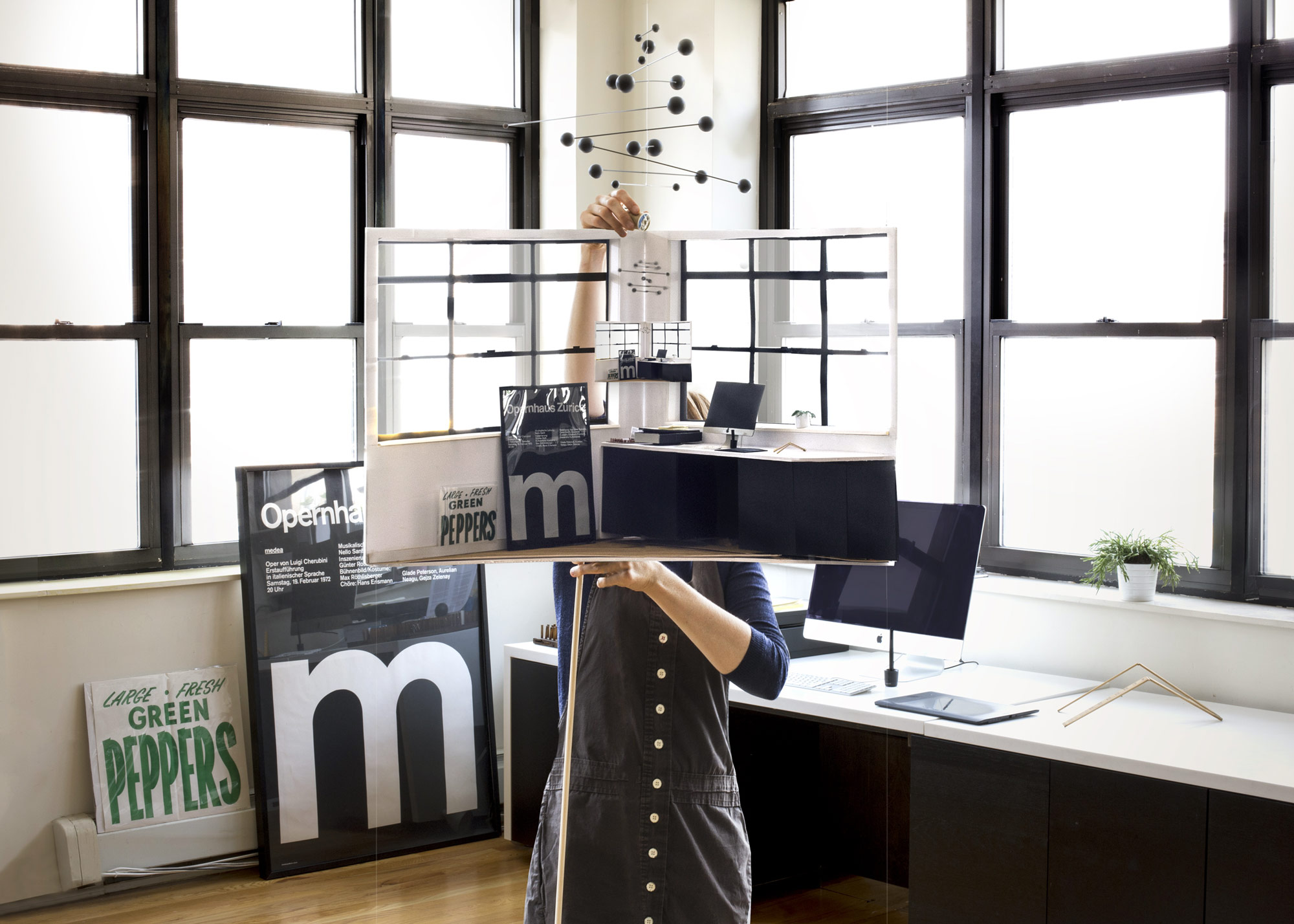
- Interview by Tina Essmaker & Emily Scheinman July 1, 2014
- Photo by Kelli Anderson
Kelli Anderson
- artist
- designer
- illustrator
Artist and designer, Kelli Anderson, is a New Orleans native, who now lives and works in Brooklyn, New York. Kelli draws, photographs, cuts, prints, codes, and designs a variety of things for herself and others. From interactive paper to layered, experimental websites, everything is done in her studio, which houses a 1919 letterpress! Kelli also teaches art history at Pratt every summer.
Editor’s note: Guest interviewer, Emily Scheinman—one of our generous Kickstarter campaign backers—made TGD history in joining Tina to interview Kelli at Oro in Lower Manhattan, and it was awesome. Thanks, Emily!
Tina: Describe your path to what you’re doing now.
Well, I was born in New Orleans, Louisiana, where I grew up. Half of my family is from Brooklyn and half is from New Orleans, so I have this very confused accent. (laughing) People seem surprised to hear that I’m from Louisiana.
My path will probably sound familiar to others who make things—it is a well-trodden one. I’ve made drawings as far back as I can remember, and I was always drawing plans to make things—mostly things no one needed. For example, my grandmother had pet rabbits, and I used to sew tiny pillows for each of them, anthropomorphizing them in this inappropriate way by assuming that they needed linen goods to have a restful sleep.
When I was in high school, I split my time between a traditional, academic high school and an arts magnet high school. At the latter, I studied fine art, which was divided into different areas of study: ceramics, sculpture, 2-D design, and 3-D design. I was also really obsessed with physics, lo-fi music, and zines. I alternated between, like, 10 different circles of friends.
When I graduated from high school, I attended the University of Louisiana for undergrad, making that choice by default because the school offered a very generous scholarship and because my boyfriend at the time was a student at the College of the Arts there. I fully embraced the academic side of college and threw myself into my studio classes and research: I even tried to rework my curriculum so that I could have a dual major in fine arts and physics, but the university wasn’t so keen on that. After graduating, I moved straight to Brooklyn, where I attended Pratt for grad school, first for painting and then for art history. While there, I started making friends who had bands, labels, and cable access shows, and who were activists for various causes. They needed visual stuff, like posters, animations, album art, and websites.
Right after graduating from Pratt, I worked at a digital agency for four months because I was interested in the Internet and wanted to get better at building websites. I quickly realized that I’m simply not made for a traditional, full-time job. So I quit and went to work in the photo archives of the library of the American Museum of Natural History for five years. There, I digitized glass plate negatives that documented things like Ernest Shackleton’s expedition across Antarctica and images of indigenous cultures that no longer exist today. I held photos of all kinds of incredible things in my hands, like Charles Darwin on his deathbed, and photos stamped “for internal museum use only,” like one of Teddy Roosevelt holding up a slaughtered lion.
During this period, I devoted the other half of my time to my own creative work: a mix of freelance work, work for friends, Internet experiments, and some personal projects. Eventually, I had to quit my day job at the museum, even though it was, admittedly, the coolest day job ever.
Tina: Because you had too many side projects?
Yeah, I was way, way too busy and was becoming a bad employee. And while I’ve always been an introvert, working in the photo archive area was a little extreme because I was sort of tucked away in my own dark little corner. A friend mentioned that he feared that I might turn into a character from a Wes Anderson film, and I definitely saw it going that way. I could have spent the rest of my life digitizing those negatives. (laughing) I don’t remember the exact point when I decided to quit, but a photographer friend of mine needed a job and I no longer needed the job, so it was time.
Tina: How long ago was that?
I quit the museum job in 2007 or 2008.
Tina: For our readers who aren’t familiar with your work, what are you focusing on right now?
I make things for myself and for clients in a variety of media. Right now, I’m working on my first book, a client-initiated stop-motion animation, and some editorial illustrations. My best projects are the ones where I don’t quite know what I’m doing and just have to reason my way through it. Those projects feed into and perpetuate a curiosity about how things work.
Design work, in particular, demands that you adapt radically and learn quickly in accordance with the unique conditions of the problem at hand. So I draw, I code, I use Illustrator, Photoshop, After Effects, laser cutters, rulers, saws, hammers, glue, or whatever the project demands. I try to meet the subject on its own turf. Of course, I find that this approach suits the project, but it also suits me. The less of a division I can have between work and pure learning, the happier I am.
I suspect that this is actually the opposite of the definition of being a professional. But it’s exactly how I can force myself to avoid taking things for granted and hopefully arrive at a unique solution. I think the viewer can tell—they can see when there is some genuine interaction with the unknown. So that’s why I want as much of the work as possible to be an experiment.
Tina: You do so much. Do you refer to yourself as an artist, a designer, or both?
I usually refer to myself as a designer. It’s a great term because no one knows what it means. I like that it’s open-ended. It gives me more freedom with materials and with the problems I’m allowed to deal with.
Tina: I’m curious about how you made the transition from having a day job to freelancing full-time.
Maybe that starts with talking about how I got into design in the first place. This is going to sound ridiculous, but I think I had three degrees before I even understood what design was—I thought design meant advertising. I was politically active from a young age after I learned where meat came from when I was 11; I’ve been a vegetarian ever since. Reading Animal Liberation by Peter Singer and getting into PETA’s activism activities was the slippery slope for me in developing a sense of self-awareness and empathy. I started off doing graphic design for groups like the Yes Men. For one project, we made a counterfeit New York Times with news from the utopian future, which we distributed all over New York.
Activism was a gateway to design for me, but so was music. I got deeply into music in junior high and high school; I was obsessed with mail-ordering records and zines. Friends in high school and college knew me as the person who could take an idea and make it into a visual thing, so friends in bands began asking for posters and album art. And I was like, “Oh! This is fun and it’s useful!” I’ve always been scrappy like that; someone has a need and I’m the person who’s there, who can make it real. I later discovered that there was this field called graphic design, distinct from advertising, and that that’s what I was doing with my life. (laughing)
Tina: Are you working mostly on your own projects right now, or are you also doing paid client work?
It goes back and forth. I always have personal projects on the back burner. Right now, I’m in a good spot because I just finished big projects for Russ & Daughters and Tinybop, so I have some time to work on personal projects, including a book and re-doing my website.
There’s also this third personal project based on my art history thesis paper on nuclear waste marker design. It’s about “deep time design,” which means exploring how to construct communications that will last over long periods of time. With nuclear waste, the US Department of Energy has regulated that the markers have to work for 10,000 years into the future. It’s this very bizarre design project because there are no rules yet and no one knows what they are doing. My paper examined the methodology and the collaborations between a team of science fiction writers, anthropologists, engineers, and scientists. That paper has been floating around on the Internet since 2007. I didn’t think anyone would read it, but Vice Magazine contacted me recently, and they’re writing an article about the subject. That’s a long-winded explanation to say that I’m going to turn that thesis paper into something fit for human consumption because it is important, and fascinating.
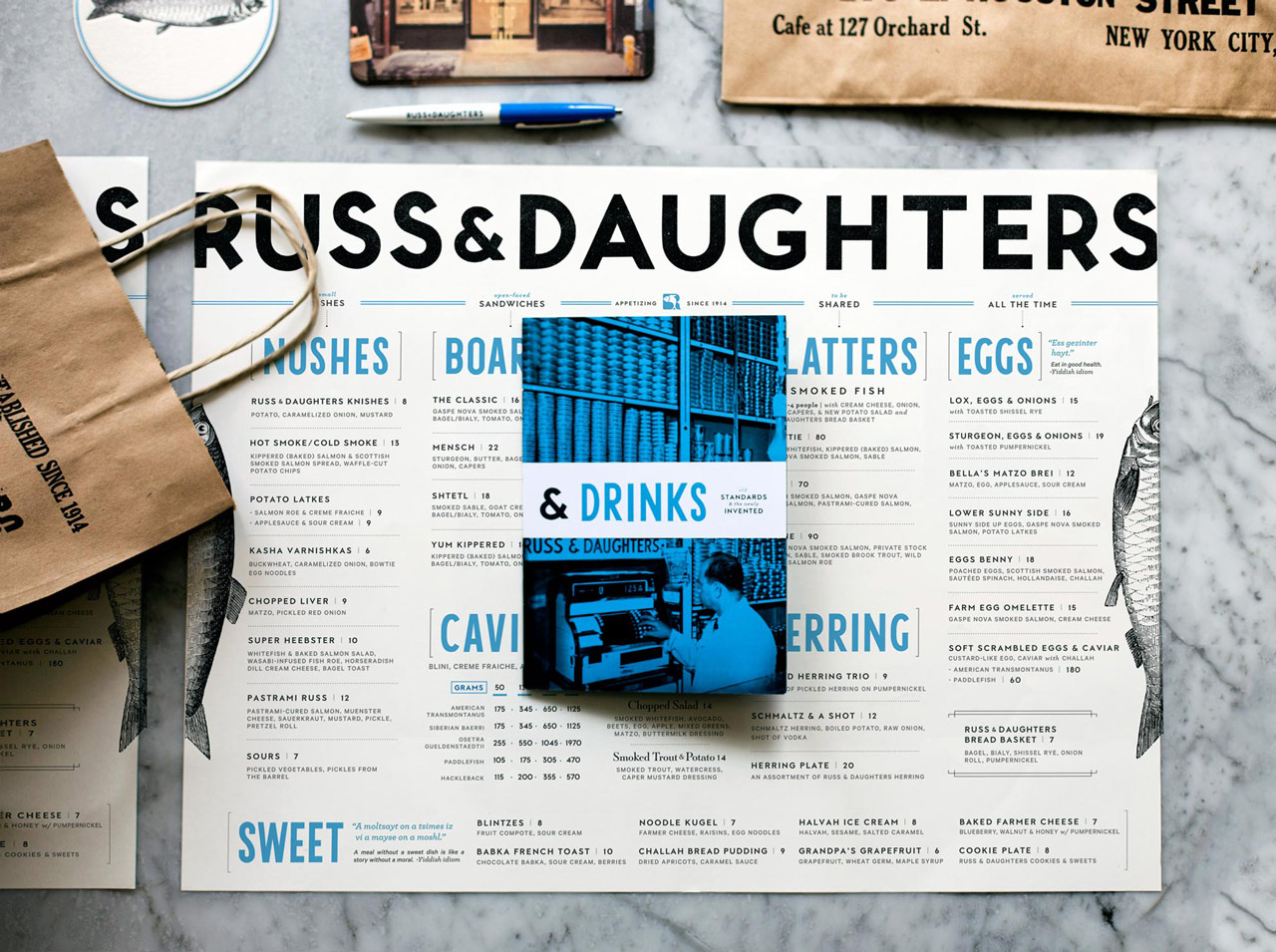
Tina: That’s interesting. I’ve never thought about that.
Yeah, design is so dependent on context. So what happens when nothing is certain about the context, not even language? Can design function at all in a vacuum like that? There are some interesting, fundamental questions that are addressed in a roundabout way by that project.
Emily: You clearly don’t tackle small problems.
(all laughing)
Emily: I’d love to hear about some of your influences growing up.
Well, the vegetarianism thing happened at a young age. I had art class and was one of those nerdy kids who only drew animals. One day, my art teacher made a comment: “Look at those little eyelashes on that deer. You don’t think about that when you’re eating a burger.” I thought, “Oh, my gosh, you’re totally right!” That was my first moment of true self-awareness. It was a turning point for me, and I started reading more about animal rights, like I mentioned earlier.
I was such a music nerd and was inspired by lo-fi music, like stuff from K Records and Kill Rock Stars in the mid to late 90s. There were a lot of bands doing home recordings, and the music was very raw and direct and touching in a way I hadn’t experienced before. I think that made a big impact on me and felt super-empowering. It made me realize that you could make things as an individual without the infrastructure of a major label or sophisticated equipment or professional tools. That became an interesting creative germ for me, which I’ve followed through my work, continually asking: What’s the most impressive thing I can do with the most humble materials? That’s exciting to me. People most easily connect with things that are human-sized, and if they can connect with how they were made, there is this built-in kinesthetic empathy, even if the ideas are big in scale. And music definitely feels that way.
Tina: You stretch things to their limits, and I mean that as a compliment.
That’s actually what this pop-up book I’m working on is about!
Emily: Can you talk about it?
Yes, I can talk about it a little. I’m not supposed to blabber too much, though. I can say that it’s going to be published by Chronicle Books in Fall 2015.
Emily: Congratulations! Chronicle is in my hometown.
Really? Awesome. Yeah, I’m trying to figure out exactly what I can make with paper. It’s about tapping into invisible forces that are at play in the world, using only paper. If I can make this work, I think it’ll be the most exciting thing I’ve ever done. Not to oversell it, but I’m really excited.
Tina: Will you be applying your interest in physics to the making of this book?
Yes!
Tina: You talked about creativity and drawing from a young age. Was creativity something that was encouraged by your family?
My dad is a river pilot and my mom is a stay-at-home mom. No one in my family is creative in the traditional sense, but they’ve always been very supportive, even though they don’t totally understand what I do. I was a rebellious teenager, and they were not supportive of that—I think I was grounded every day in high school. (laughing) But I do feel like I’ve had every advantage in life, so I feel a responsibility to push myself to try harder. I’ve been given so much.
Emily: Was there an “Aha!” moment when you knew that design was what you wanted to do? I think you kind of touched on this.
I think maybe the “Aha!” moment might have been when the Internet became a viable option for presenting your work. The fact that I could have a portfolio site and interface directly with people who I wanted to work with gave me the tools to be independent in a way that wasn’t available pre-Internet. I didn’t have to have gallery representation; I didn’t have to have a rep. I could do it on my own. That was an “Aha!” moment for me.
“People most easily connect with things that are human-sized, and if they can connect with how they were made, there is this built-in kinesthetic empathy, even if the ideas are big in scale.”
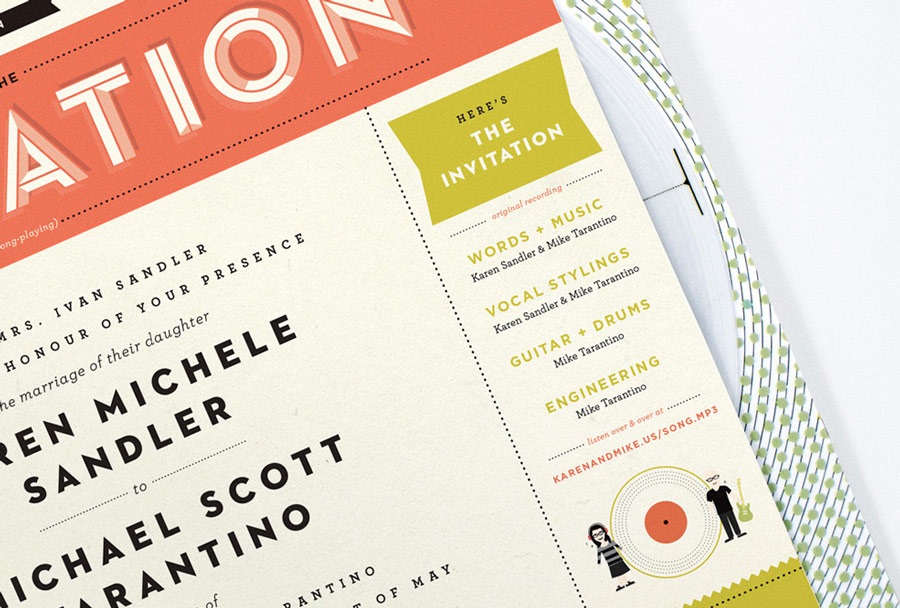
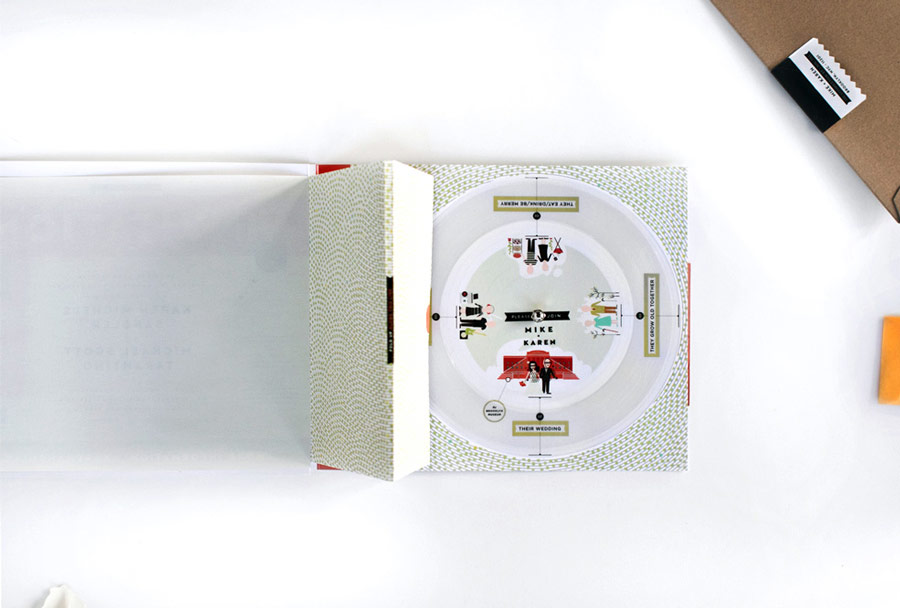
Tina: The Internet has allowed so many of us to build an audience and connect with people.
The modest things I have achieved have been enabled by the Internet, and I’m so grateful that there is this platform that allows me to be independent. But I’ve been reading this book that’s really good, and I think I should recommend it. It’s called The People’s Platform by Astra Taylor. She talks about all of the ways in which the Internet has failed in its utopian vision. For example, she talks about how existing power structures, which were recognized as counterproductive in the analog world, have been reflected in the digital world. I read a statistic the other day about how 40% of businesses in the US that are brick and mortar businesses are owned by women, but only 8% of Internet startups are run by women. I think we have this assumption that because it’s a progressive medium, it’s actually progressive and more equal, but it isn’t. I don’t know—the more I read this book, the more I’m questioning these things.
Tina: That’s a good point. You talked about influences earlier. Have you had any influencers, or mentors, along the way?
Let me think about it. Well, in school, I had an art history professor named Marjorie Welish. She was an artist and poet, and she was a really fantastic teacher. She framed the progression of modern art as a search for truth, with that idea-baton being passed from one artist to the next via a visual conversation. I started thinking about visual culture as a direct way to advance intellectual inquiry—a portal to get at big questions that can be passed along and developed collaboratively.
There was also a painting teacher I had named Linda Francis, who was a great influence. I had never really seen the conflict between physics and art because they both deal with material facts. There are so many fields these days that are speculative, where you almost create this model or image of the world in your mind and test out theories. With things like art and physics, you have a hypothesis and test it, and either everything comes crashing down and it doesn’t work, or it works. There’s this immediate feedback from the physical world with both and that is how you make decisions. Linda shared that worldview, so working with her was a very good experience. She turned me on to artists like Hans Haacke, encouraged me to watch The Way Things Go, and got our painting class to read Herbert Marcuse.
Tina: In terms of business, did you have anyone who helped you?
No. I’m probably the worst business person ever! (laughing) I try to assess projects based on how excited I am about doing them. My main goal is to keep what I’m doing sustainable and to keep enjoying it—to keep that ball of enthusiasm rolling. My other half, Daniel, is pretty responsible, however. He recently quit his full-time day job, and we’re working together now. I do feel more responsible now that it’s not just me; I have to consider whether or not we’ll be able to pay rent.
That said, I’m really fortunate that my life is very simple; I don’t have a ton of expenses other than rent. I ride my bicycle everywhere, and I have everything I need. Also, notably, I don’t have a bunch of student debt, which is a major issue for graduates. It is more difficult to make decisions independent of money when you have $40,000 in student loans to repay. So I try not to take my situation for granted.
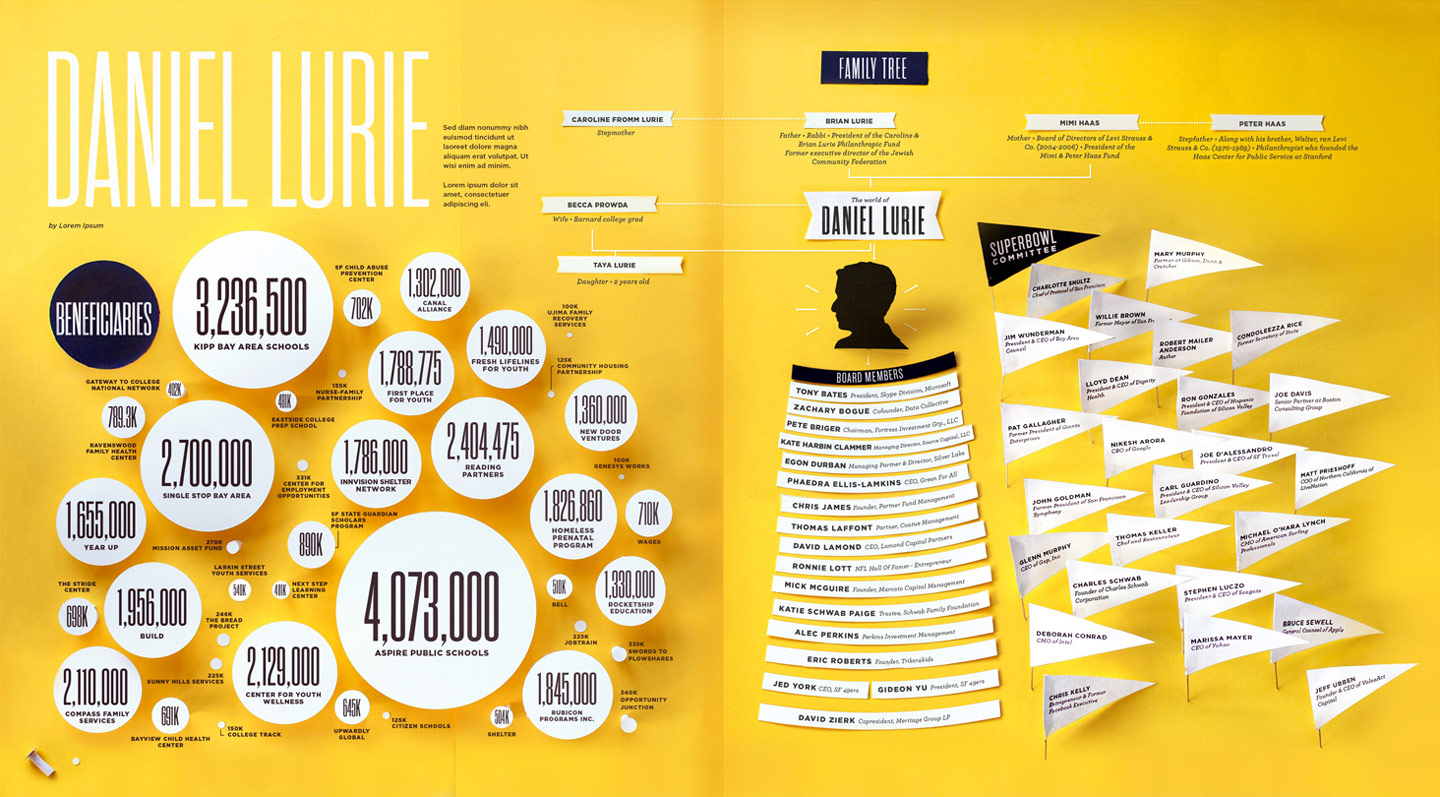
“I try to assess projects based on how excited I am about doing them. My main goal is to keep what I’m doing sustainable and to keep enjoying it—to keep that ball of enthusiasm rolling.”
Tina: Was there a point when you decided to take a big risk to move forward?
Every project I do is kind of a risk, because I usually don’t know exactly what I’m doing. If I want to build a website and need to know a certain amount of JavaScript, I run a Google search and try to figure it out. I’m constantly putting myself into a position where the whole project will fall apart if I can’t figure out how to do it. I learn best that way. People learn best when they are dropped in a foreign country and their survival depends on their learning the language. All knowledge is like this—you learn best when you need it.
Emily: Do you feel a responsibility to contribute to something bigger than yourself?
Yeah, I’ve been so very lucky, and I feel obligated to do the very best with everything I have. With each project, I try to create something I believe in aesthetically that will also push visual culture forward and be good for the world. I’m really bad at deceiving myself, so I only work on projects that I’m legitimately excited about. I’m not sure if I know how to measure the impact of what I do, though. I do feel deeply indebted to the culture and ideas I’ve inherited from others: the records that I’ve listened to, the artists whose work has made different concepts click, the things that have guided me.
Emily: Has there been a particular project that has felt successful to you?
Yes. Most projects are released into the world and you don’t see the impact immediately—you’re not sure if anyone sees it or cares about it. The project that we definitely got a lot of immediate feedback on was that fake New York Times issue that we made for the Yes Men. We had people hanging out in our apartment for three weeks, editing the paper. When we sent it to the first printer, they actually refused to print it after seeing what it was. We went through a couple printers before we found one that would print it. (laughing) We made 500,000 copies, picked them up in U-Haul vans, and stationed the vans in eight different locations around Manhattan. We had volunteers—who didn’t know what they were doing—show up at 5am and grab the papers to pass them out. I helped pass them out, and it was great. Some people were really pissed off because they thought they were reading an actual New York Times and they were angry when they discovered that they’d been fooled. A lot of people were so happy and totally got it. It was surreal; it was a moving experience.
Many people said that they were also inspired by the paper record player I made for my friends’ wedding invitation. Seeing that demonstration of this absurd thing that was actually possible and actually functioned seemed to open up a lot of possibilities for other creative people.
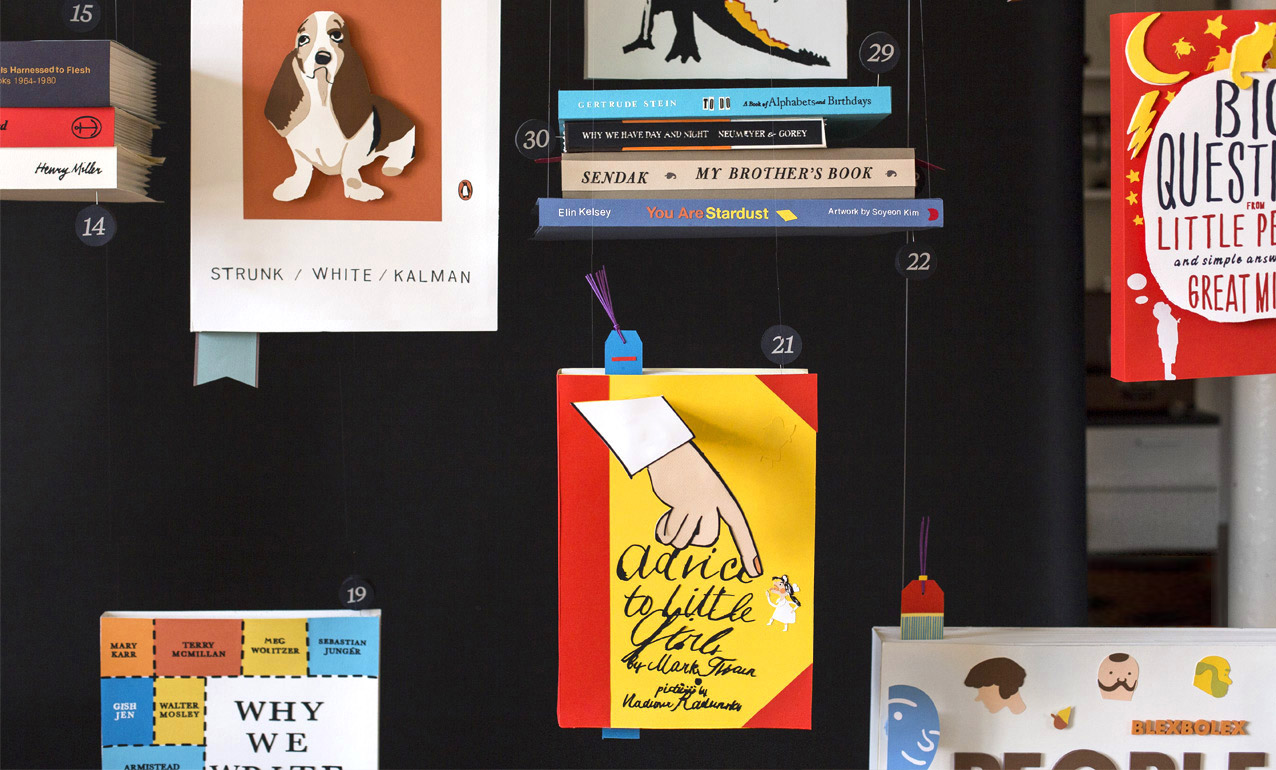
Tina: So, are you creatively satisfied?
I really should be, because I get to work on all these projects, but I don’t know. I always want more and am always trying to figure out what the next step is. I don’t think there can be a sense of stasis. There’s always an urge to move forward and do more, and it’s inevitable that each project leads to more questions. Satisfied sounds like a terminus, and it’s not like that; it’s a continuing inquiry.
Emily: What advice would you give to someone starting out?
Oh, wow! I have these strange feelings about advice because the experiences of one person aren’t transferable to another. People’s situations are so different. It’s hard to even understand how to give advice.
If I was pressed, the advice I would give is that people should try to understand the context and importance of their work. What does it all really mean? What is this about? If you don’t sit down and write it out or understand what it is that you’re doing on your own terms, you’ll be misrepresented at best and ignored at worst. Even if you’re working on a project and don’t know what it means while you’re in the throes of doing it, set aside a chunk of time afterward to digest it and figure out what you learned and what ideas were at play. That packages the project into a format that others can consume. Writing about my work has brought others to my projects and made them more accessible.
Tina: That’s great advice. So, you live in New York. How long have you been here?
I’ve lived here for 12 years now.
Tina: How does living here influence your creativity or the work you do?
New York City is kind of awesome and kind of a trap, because I don’t think I could live anywhere else now! What I value about New York is that you can’t control it. There are always things happening that will be a surprise. When I walk out of my door in the morning, I don’t know who I’m going to talk to or what I’m going to encounter. It is a bit anarchic. And I want nothing more than to be surprised by the world.
Whenever I’m stuck creatively, I’ll go to galleries in Chelsea or the Lower East Side or Bushwick and see what people are doing. Or I’ll go to the Museum of Modern Art (MoMa) or the New Museum. A lot of times, I’ll encounter pieces in MoMa’s permanent collection that I’ve seen a million times, but now that I’m older or have had different experiences, I see them differently and they finally click. I think that’s why I like the city so much: I get to experience things that I couldn’t have come up with myself.
Emily: It sounds like it’s important for you to be part of a creative community of people?
A lot of the work I do is with friends, or with clients who then become friends. Collaborating is super important to me. I like having input and ideas from other people. I feel like the Internet has a built-in community when it comes to design. I love posting things to Dribbble because, a lot of the time, I just don’t know—sometimes I post work I think is awesome and I don’t get a great response, or I post work that I think is incomplete and people really like it, which tells me I should stop. I think it’s useful to have both the online community and a tight-knit community of collaborators to work with, and I’m happy to have both.
Emily: What does a typical day look like for you?
There isn’t one. Some days are pretty laid back. I really like riding my bike, and sometimes I can run errands around the city all day and work at night. Other days, I’m on a crazy deadline and have to get it done, so I wake at 5am and work all day, late into the night. But an ideal day would be waking up at 9am and going to the coffee shop with my laptop to take care of email. Then I’d run errands, return to the apartment, and work until dinner time. Then I’d work again after dinner while sitting on the couch watching Louie.
Tina: So you’re working out of your apartment?
Yeah. During the day, it’s Daniel and me working together in the space, although we mainly work independently. And then we have two cats. It’s cool, actually. Our apartment is in a building that used to be an old sweater factory. They knitted the material for sweaters there. It’s this Andy Warhol Factory daydream that I had as a kid coming true, so it’s awesome. Now, I just need floating mylar pillows and The Velvet Underground for the dream to be complete!
Tina: What music are you listening to right now? Do you and Daniel listen to music together in the studio?
Well, Daniel has control over the speakers because he has his iTunes connected to them. I like most of what he plays, and he also does this podcast called The Sounds in My Head. Although sometimes I do say passive-aggressive things, like, “Is this your friend’s band?” (laughing) But we agree on, like, 90% of what we listen to, and our tastes have converged over time. In high school, I only wanted to listen to things that were recorded on a tape recorder with a guitar with five broken strings. Daniel actually listened to the radio—he has very capacious music taste. I’ve grown far less radical and he’s gotten a little more puck rock.
I’ve just finished this Russ & Daughters project, which is such a celebration of New York City, so I’ve been listening to a lot of Magnetic Fields, Talking Heads, Philip Glass, and Blondie. I also like Parquet Courts, who sound a lot like what would happen if the band Angry Samoans was reporting on a walk around Bushwick.
Tina: Any favorite movies or TV shows?
I really love Comedians in Cars Getting Coffee. It’s Jerry Seinfeld driving around in cars, talking to comedians, and getting coffee. It’s simple; it’s great. I’m not a big movie or TV buff, but I do like that show. Also, Cosmos!
Emily: I’d love to know what you’re reading now, but I’d also like to know what favorites you had growing up.
Oh, when I was a little kid, I read so many books. Almost all of them were about animals or were nature books, mostly with some sense of tragedy or injustice: Old Yeller, White Fang, and Watership Down. But I also really liked A Wrinkle in Time and The Secret Garden. I was the super-nerdy kid who would read 300 books in a weekend for the MS Read-a-thon.
My favorite thinking-about-art book, which I think everyone should read, is called Seeing Is Forgetting the Name of the Thing One Sees by Lawrence Weschler. Visual work can be a lonely field because so much of it can’t be elegantly expressed in words, which is mainly how human beings exchange ideas. But Robert Irwin finds a way, and you just love him for it.
Tina: What is your favorite food?
I really love coffee, especially Cortado. I think I know the name, and band, of every barista who works in Williamsburg and Greenpoint. (laughing) I drink so much coffee! In terms of food, I like sweet potatoes, kale, creme brûlée, and a new discovery: for some reason, it has taken me 30 years to figure out how delicious navel oranges are! You know, those Sunkist oranges at the bodega? I suspected they were just decoration, but it turns out that they are actually amazingly delicious.
Emily: Are you ready for the last question?
Yeah.
Emily: What kind of legacy do you hope to leave?
I don’t know. Can anyone really answer that question without being a hopeless narcissist?
Emily: It’s a hope.
I mean, I hope I get people interested in questioning why things are the way they are. I hope to expand what they assume is possible.
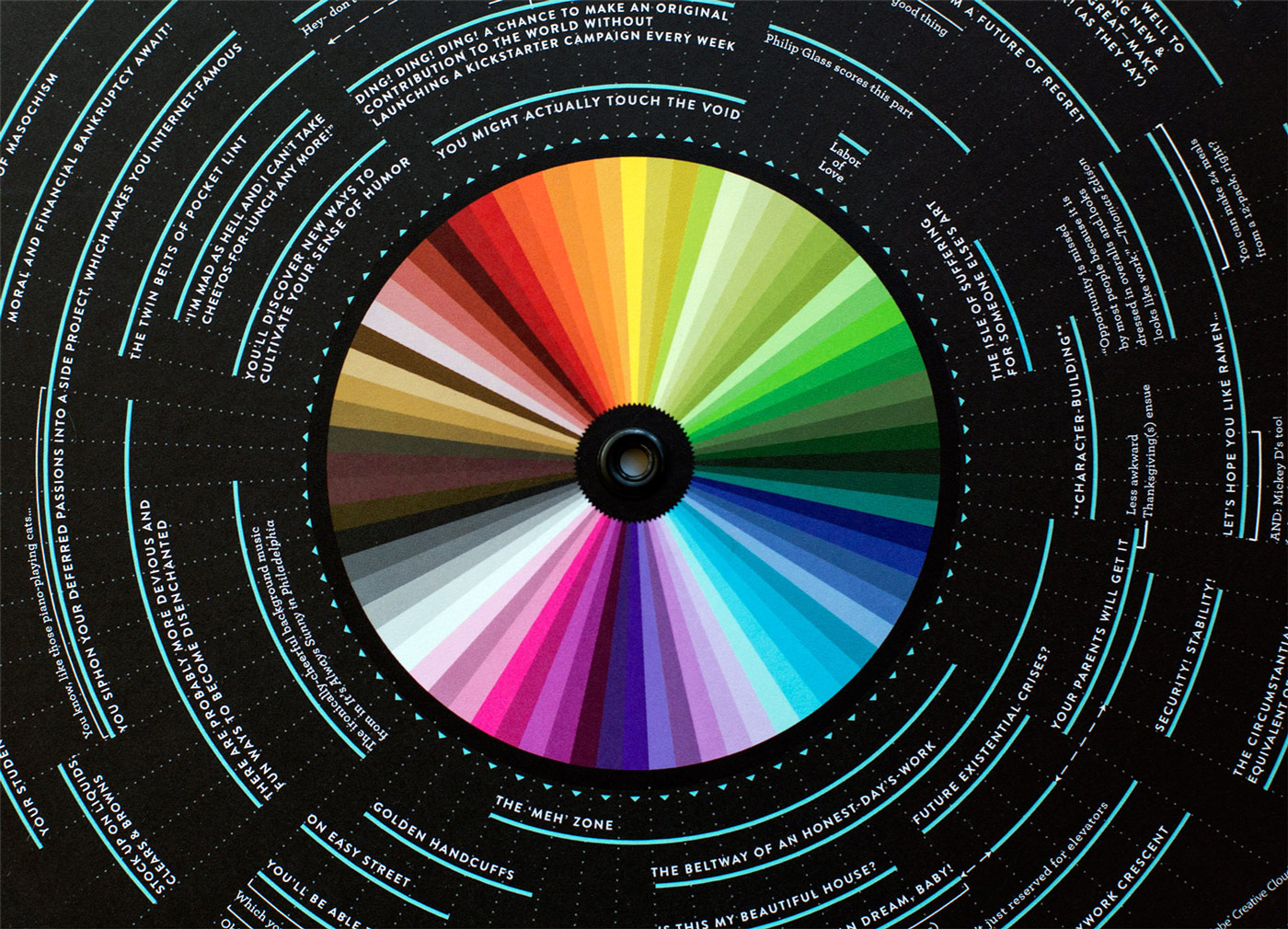
“I don’t think there can be a sense of stasis. There’s always an urge to move forward and do more, and it’s inevitable that each project leads to more questions. Satisfied sounds like a terminus, and it’s not like that; it’s a continuing inquiry.”
